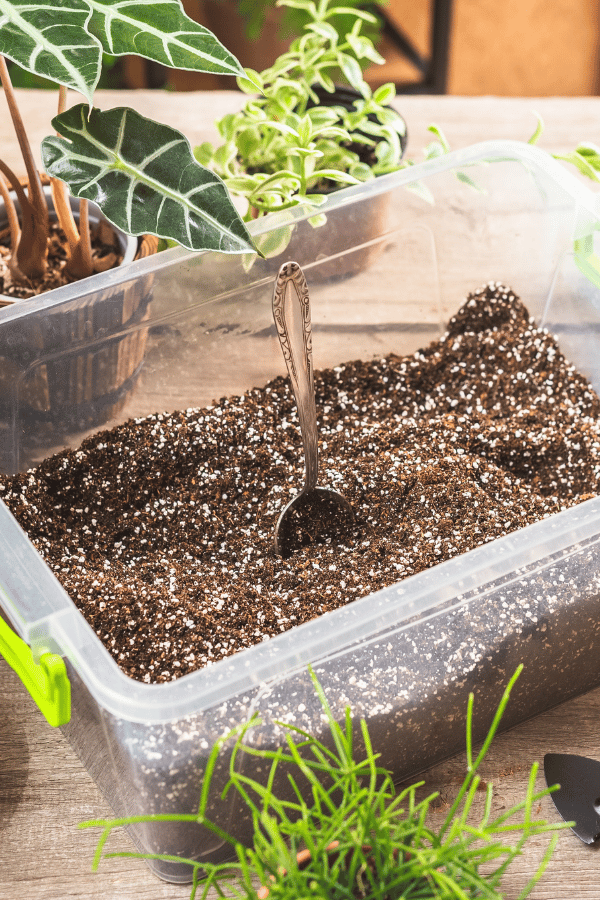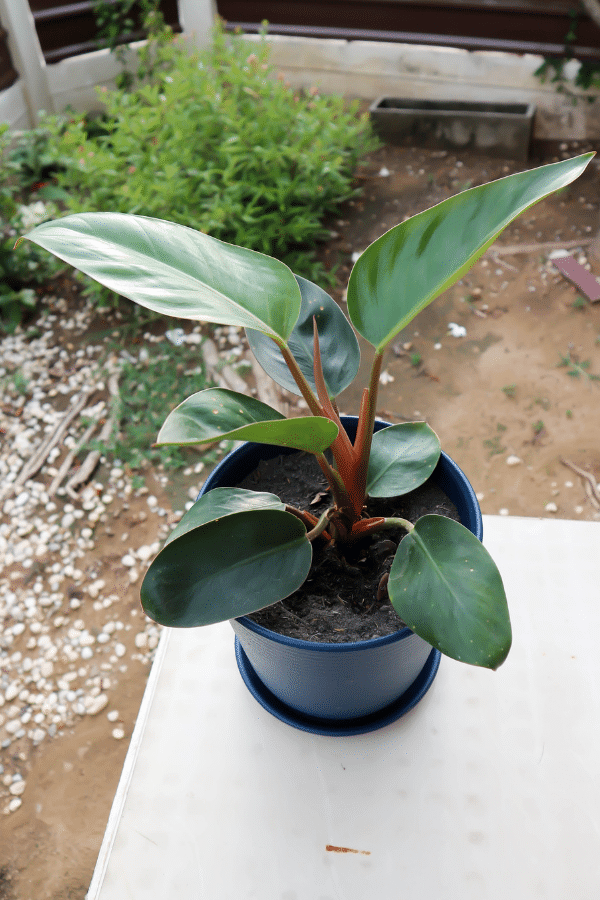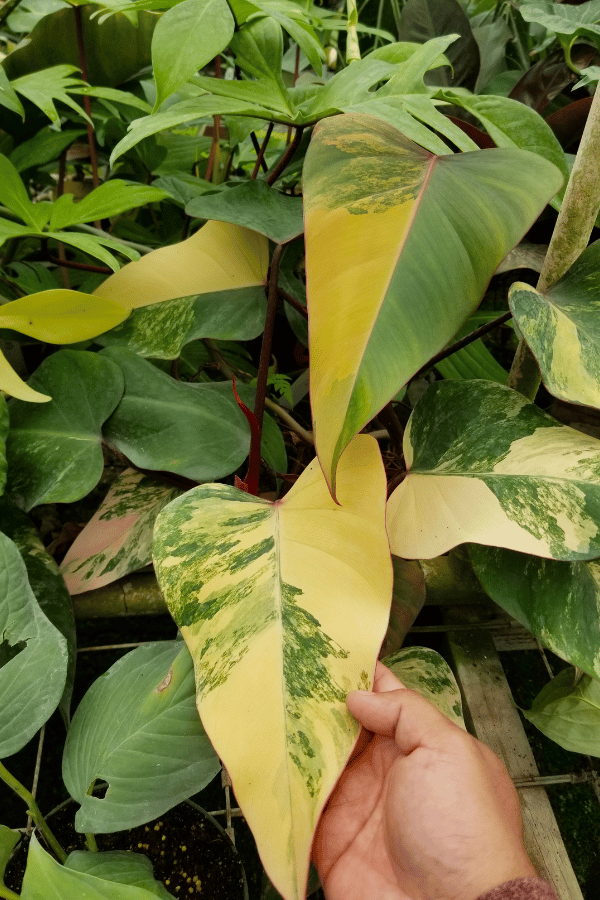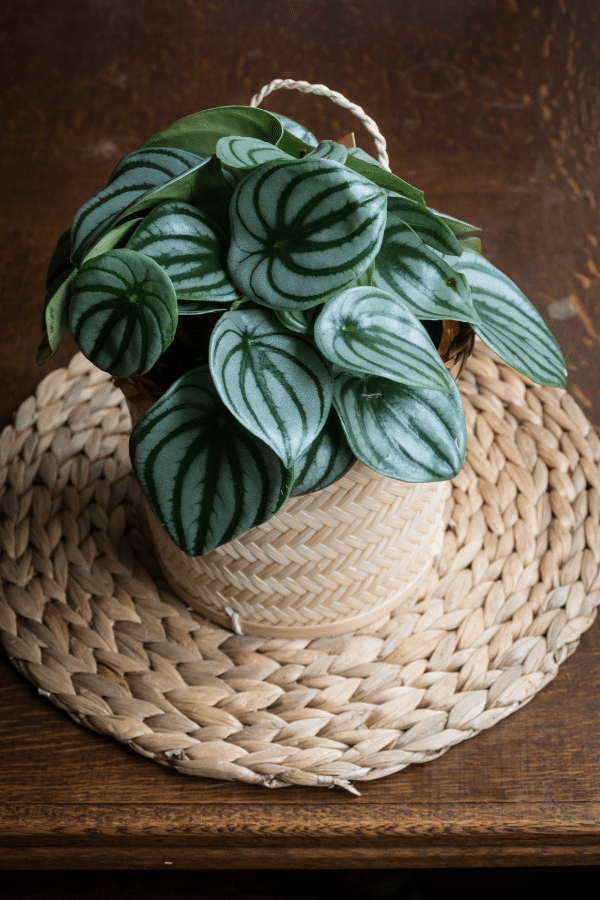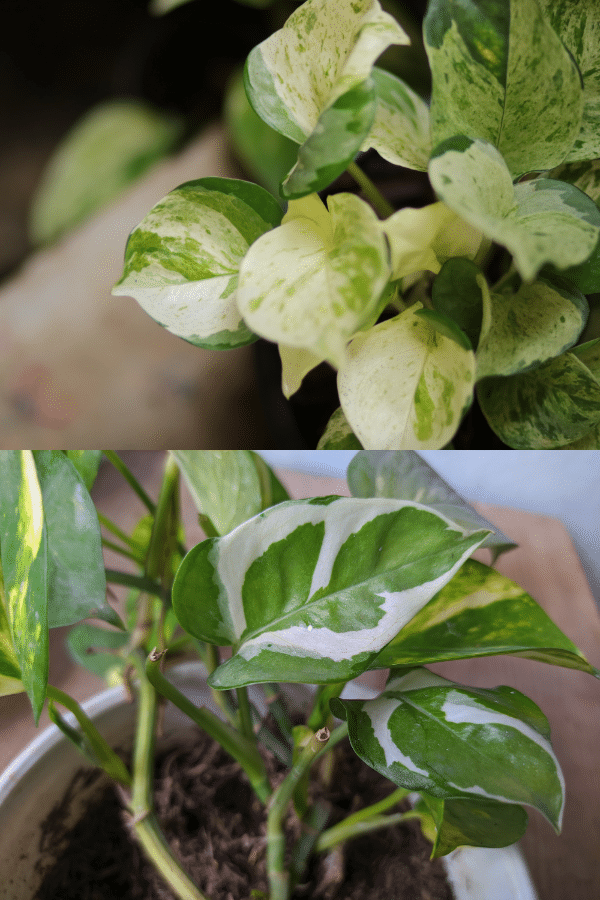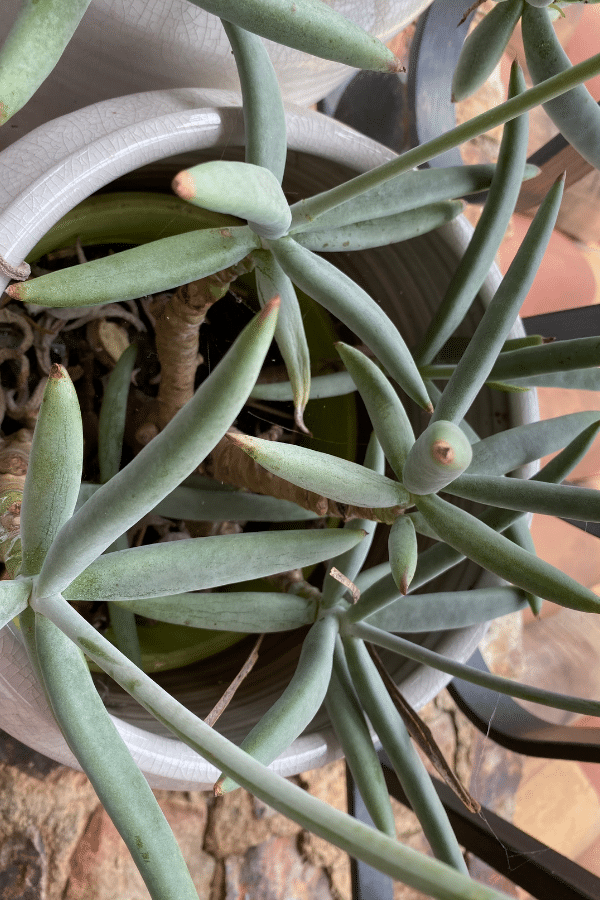Alocasia Dragon Scale
Scientific Name: Alocasia Dragon Scale
Common Name: Alocasia Dragon Scale
Alocasia Dragon Scale care is an easy Alocasia to grow and care for. If you want a houseplant that has unique foliage with texture and silver-white streaks, an Alocasia Baginda Dragon Scale plant may be for you.
To give this Alocasia plant the best care, it requires well-draining soil, keep the soil moist by watering often, provide it with bright indirect sunlight, temperatures ranging from 60-85F, and high humidity levels.
Quick Care Overview
| Common Name | Alocasia Dragon Scale |
| Scientific Name | Alocasia Baginda Dragon Scale |
| Family | Araceae |
| Origin | Borneo Rainforest |
| Growth Rate | Fast |
| Identification | Dark green leaves with texturized veins and white undersides |
| Height | Up to 3 feet tall |
| Soil | Well-draining soil |
| Water | Keep soil consistently moist |
| Temperature | 60-85F |
| Sunlight | Bright indirect light |
| Toxic to Cats & Dogs | Yes |
| Toxic to Humans | Yes |
| Pests | Scale, spider mites, thrips, and fungus gnats |
| Diseases | Root rot, leaf spot |
Below we will dive deep into this Alocasia Dragon Scale care guide.
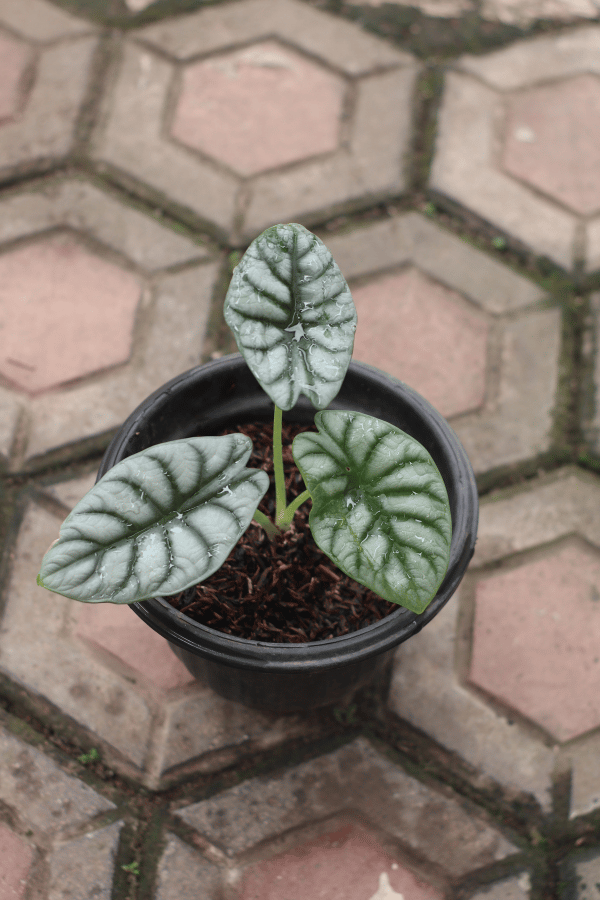
Alocasia Dragon Scale History
Borneo rainforest native, Alocasia Baginda Dragon Scale, is a rare, stunning houseplant that has become a favorite amongst houseplant collectors. However, due to its popularity and uniqueness, it has become quite challenging to find and can be pretty spendy to obtain. However, as this plant is not considered easy to care for, it is not recommended for beginners.
Alocasia Dragon Scale Identification
Alocasia Dragon Scale presents gorgeous dark green leaves that have spectacular vein patterns and textures. The foliage patterns appear similar to dragon scales. The undersides of the leaves will be light cream color with dark maroon veins. As the plant matures, its foliage will turn to darker shades.
Alocasia Dragon Scale Growth Facts
While the Dragon Scale Alocasia can grow over 6 feet in its natural environment, it is unlikely to grow larger than 3 feet while grown indoors. This plant is considered relatively quick-growing.
How Big Does an Alocasia Dragon Scale Get?
The Dragon Scale Alocasia will reach up to 3 feet when grown indoors with a 2 feet spread.
Alocasia Dragon Scale Care
This plant requires high humidity and plenty of light. However, if you have successfully grown an Alocasia before, you should have no issue caring for this plant.
Alocasia Dragon Scale Soil
The Alocasia Silver Dragon will require an airy, well-draining growing medium. You may create a perfect potting mix by combining coco coir (or peat moss), orchid bark, and perlite at a 1:1:1 ratio. Standard commercial potting soil is not recommended.
Alocasia Dragon Scale Fertilizer
The Dragon Scale Alocasia is considered a heavy feeder. You should feed your plant 1-2x monthly during the warm growing season with a balanced liquid fertilizer. Additionally, your Dragon scale Alocasia prefers to grow in slightly alkaline conditions. You may aid your Alocasias growth by adding calcium carbonate to your soil. Stop fertilizing this Alocasia plant during winter dormancy.
Alocasia Dragon Scale Watering
Your Dragon Scale Alocasia will require above-average watering and should never be allowed to dry out. Rewater your Alocasia after the top 1 inch of soil has dried. However, you should not oversaturate your plant, as too wet soil may lead to issues such as root rot. When watering, water until the water comes out of the drainage holes, and remove excess water from the plants drip tray.
Alocasia Dragon Scale Light Requirements
Your Alocasia will require plenty of indirect bright light. However, it would help if you did not place your Dragon scale Alocasia in intense, direct sun, as this may cause foliage scorching. Place the plant in front of a sunny window with a sheer curtain to achieve indirect sunlight. Additionally, as this plant tends to lean towards the light, you should periodically rotate your plant’s container to maintain uniform growth.
Alocasia Dragon Scale Temperature & Humidity
Your Alocasia, being a rainforest native, likes to remain warm and humid. Average indoor temperatures should suit your plant. However, you should never expose your Dragon scale Alocasia to temperatures under 55 degrees Fahrenheit. This Alocasia requires above-average humidity, between 60-80%. Therefore, it does well when placed in terrariums, which gives it a lot of moisture consistently. You may provide your Alocasia with the humidity it needs by installing a pebble tray or humidifier.
Repotting Alocasia Dragon Scale
You should repot your Alocasia every 2-3 years whenever you see roots peeking out from the container’s drainage holes. Your Dragon scale Alocasia will not mind being somewhat rootbound. Repotting should ideally be done in spring. Select a container that is 1-2 inches larger than the previous container, refresh the soil, tamp lightly, and water thoroughly. After repotting, place your plant in indirect light.
Alocasia Dragon Scale Maintenance & Pruning
The Dragon Scale Alocasia has low maintenance requirements. Periodically inspect your plant and remove any diseased, discolored, or dead foliage using sharp, clean pruning shears. Also, be sure to dust off the leaves so the entire plant can absorb as much sunlight as possible, this is especially true in winter when the days are shorter. Keep this plant away from cold drafts, such as old windows or AC/heat ducting. If it’s near cold drafts, you will see brown leaf tips.
Alocasia Dragon Scale Propagation
You may easily propagate your Alocasia Dragon Scale through division in the root systems. You should only propagate a mature plant that is over three years old. To divide, remove Alocasia pups from the mother plant. Use a sharp, clean blade to separate the roots if it has become too enmeshed with the mother plant. Plant the propagations into their own container with fresh potting soil, tamp lightly, water thoroughly, and place in indirect light. Watch for a new leaf!
Alocasia Dragon Scale Toxicity
Toxicity to Humans
The Dragon Scale Alocasia is considered toxic to humans due to its calcium oxalate content. Do not consume any portion of this plant.
Toxicity to Cats & Dogs
Unfortunately, the Dragon Scale Alocasia is considered toxic to pets. Do not allow your cat or dog to ingest any portion of this plant. However, if you suspect your pet has consumed this plant, contact your veterinarian or animal poison control.
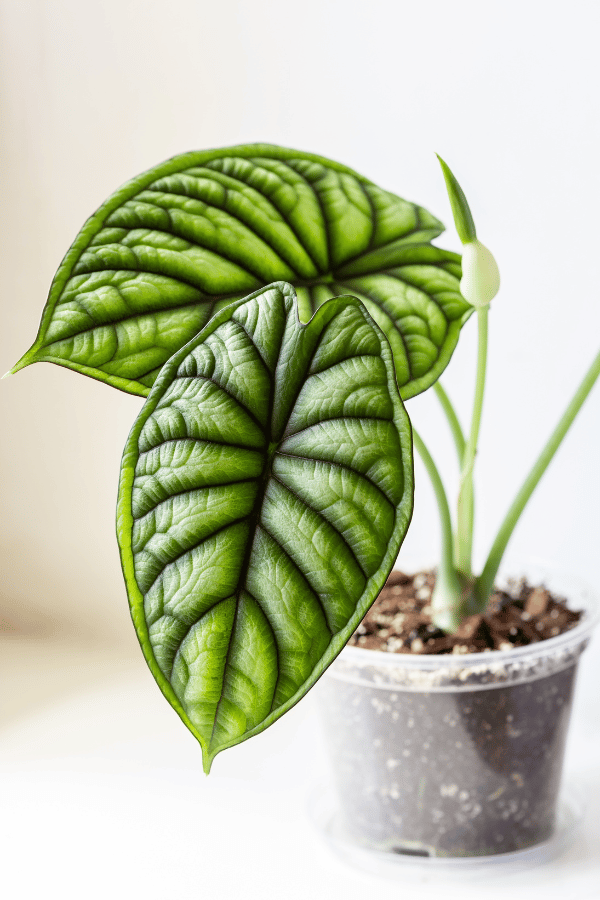
Alocasia Dragon Scale Problems
Alocasia Dragon Scale Leaves Turning Yellow
When the foliage of your Dragon Scale Alocasia turns yellow, it is typically due to overwatering.
Alocasia Dragon Scale Leaves Turning Brown
The Dragon Scale Alocasia may experience browning of its foliage if it is overwatered, is left in too intense of direct sunlight, or is not provided enough humidity.
Alocasia Dragon Scale Diseases
While the Dragon Scale Alocasia is considered relatively disease-resistant, it still is very susceptible to root rot due to overwatering and leaf spot.
Alocasia Dragon Scale Pests
The Dragon Scale Alocasia can become susceptible to infestation from common indoor houseplant pests such as scale, spider mites, thrips, and fungus gnats. Upon identification of a pest infestation, isolate your plant, and treat with a pesticide such as insecticidal soap or neem oil.

